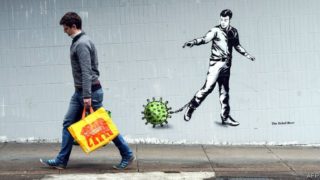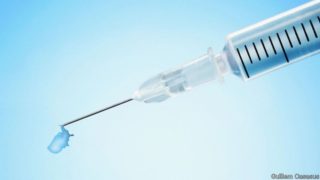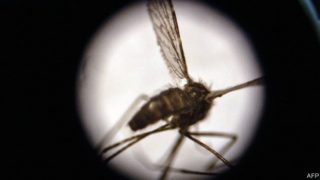Most viruses become less deadly as they mutate. This one may be different
AFTER INITIALLY emphasising that the B.1.1.7 variant of SARS-CoV-2, first found in south-east England, was more contagious but not any more deadly than the wild-type virus, Boris Johnson said on January 22nd that it seemed associated with higher mortality after all. That is surprising. Viruses tend to become less lethal over time. Why might this virus not be following the rules?
For organisms to replicate, genetic material must be copied. Occasionally, errors creep in and are passed on. Such mutations occur in animals, plants, fungi, bacteria—and viruses. They are almost always fatal, so offspring with them die before they can reproduce. Very rarely, the error grants an advantage that helps the offspring reproduce more successfully than their unmutated kin.
Viruses depend upon people spreading them and many, like HIV, Ebola and the original SARS, usually make a person particularly infectious only after they have spread throughout the body. At that point the host’s cells are under extensive attack, the immune system is working hard and the carrier feels exhausted and terrible. From an evolutionary perspective, the virus benefits if this period of extreme infectiousness is drawn out for as long as possible, in order to give its progeny more time to spread. Killing the host abruptly limits the chances for a virus to infect others, even if the virus can spread from a corpse. That is why mutations which make a virus less lethal are often favoured by natural selection.
However, with SARS-CoV-2 that is not a factor because the virus makes people most infectious around the time they first show symptoms and weeks before they are likely to perish from complications. If a person dies a few weeks after having been highly infectious, it has almost no effect on the evolutionary trajectory of the virus. Thus, it is just as likely for chance mutations to crop up in the viral genetic code that make it more lethal as it is for chance mutations to make it less lethal.
B.1.1.7 and some other variants, including the one recently identified in California, have spread widely because they have mutations that modify the tool the virus uses to invade cells. SARS-CoV-2 uses the spike or “S” protein to attach itself to receptors on cell surfaces that, once activated, let the virus inject its genetic material. Though the mechanism remains obscure, changes in the spike protein help B.1.1.7 and the other variants enter cells. One effect is that they are more infectious.
How B.1.1.7 ended up with both a mutation that enhances its lethality and a mutation that makes it more infectious is also a mystery. Perhaps two separate genetic changes happened independently in a single infected individual, but the odds of that are low. Since these two mutations were not found in individual viral strains before B.1.1.7. variant was detected, it is also unlikely that two variants of the virus, each carrying one of the two mutations, merged their genetic information in a single unlucky person infected by both at the same time. More likely is a web of molecular interactions that meant the appearance of one mutation triggered the appearance of another, like dominos knocking one another down. Virologists increasingly think that just a small number of genetic alterations are driving substantial changes in the behaviour of the virus.
The new variants are all more inclined to mutate than the wild-type virus that was spotted in Wuhan in 2019. Coronaviruses have large genomes and their extra genetic material looks as if it is used to “error check” the viral copies that are made inside a host cell. Error-checking probably helped the virus endure in bat populations for centuries where it faced precious little resistance. Now that it is facing extreme resistance having moved to a new species—humans—that has imposed lockdowns, masks and vaccines, the error-checking components in the viral genome are less valuable. Instead, it is the very ability to mutate that is being selected for. More domino-like cascades of mutations may be in store.
By The Economist





